1066 The Sonics at the Grooveyard
MEMOIR: The Sonics at The Grooveyard: My Loud Baptism of Fire
by Grahame Ware
*

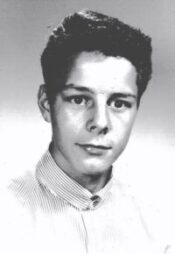
On reviewing Aaron Chapman’s Vancouver After Dark (Arsenal Pulp Press, 2019), I was flooded with memories of my youth and the venues where I first learned the power and pull of nightclubs. My realization of this, my baptism of fire moment, was at the Grooveyard, a no-drinks club and dance hall that catered to youth, i.e. teens, in New Westminster. It was a large, beautifully proportioned wood and brick building on Carnarvon Street that served up one thing: R & B aka Rhythm & Blues. The Grooveyard was put together by Red Robinson and Les Vogt doing business as Jaguar Enterprises along with the radio personality Fred Latrimouille (1945-2015) acting as the popular front man to attract the teens. The Grooveyard was managed on a day-to-day basis by future on-air weatherman Doug Miller who had made his way down from Penticton at Vogt’s urging. Based in the Royal City, it would draw on kids from Burnaby, Coquitlam, Surrey, Delta, Haney, and Langley, as well as New Westminster.
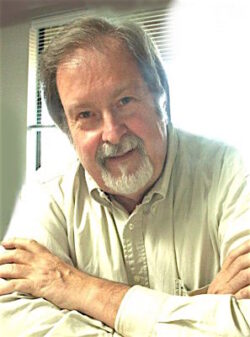
This was a time in history both locally and internationally (the early to mid sixties) that was the zenith of R & B, a time when James Brown would fill Vancouver’s top venue at the time, the Queen Elizabeth Theatre, for top dollar — and not just once but twice in the space of a couple of years. The James Brown shows were, as it turned out, one of Vogt & Robinson’s biggest early successes as impresarios and allowed both of them to become first time homebuyers!
I went to the Grooveyard for the first time one Friday night in 1965 with some older friends who had wheels, but I was really looking forward to a band I’d heard on the radio that weren’t R & B — the Sonics from Tacoma. A subversive voice inside me said, “Sorry boys, tonight there’ll be no cute line dancing here holding onto the waist of some nubby with poofed-up beehive hair in a mohair sweater with boobs that look like they’d been put into a pencil sharpener.” Where did these girls get the Wonderbras that looked like they came from Alcan’s Kitimat refinery?
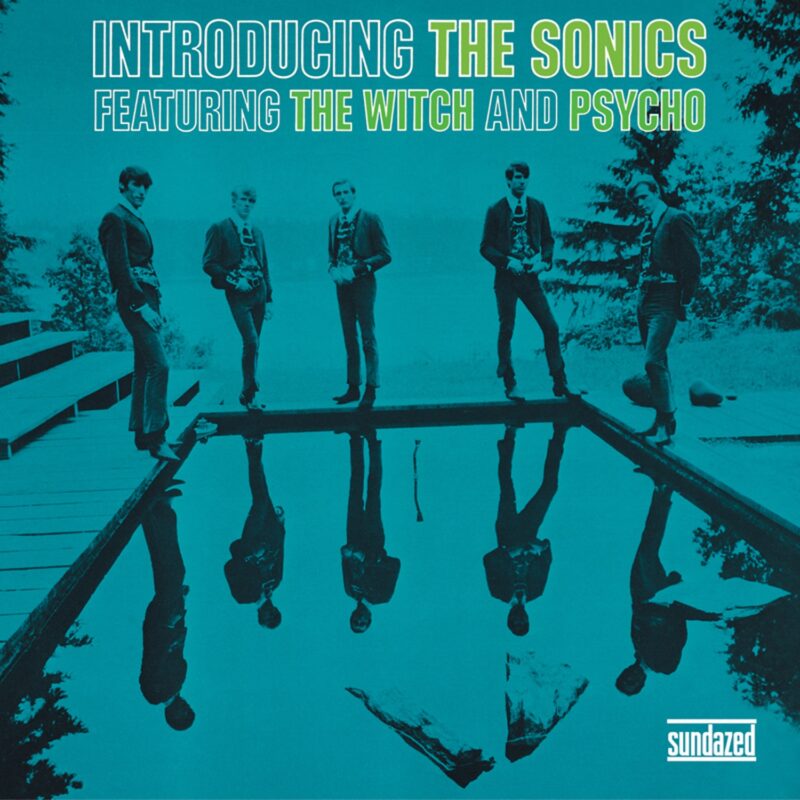
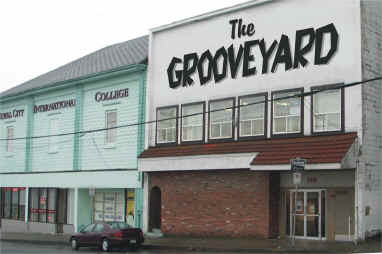
The Sonics were a proto-punk band that begged freestyle dancing and many of the Grooveyard’s teenage troops just weren’t programmed for freedom of self-expression. A few were though. So we danced, laughed and talked over or, rather attempted to talk over, the very considerable wall of sound that was the Sonics. The Sonics were LOUD with a primal crackle and surge that was molecular! Their hit songs, “The Witch” or “Psycho” heard live would induce a contact tinnitus. The only other time this hearing disorientation happened to me was a few years later when I somehow ended up in the front row of a Deep Purple concert at the Agrodome late in 1968 (their first time). And, no, it wasn’t their skinny drummer Ian Paice that did it. It was Richie Blackmore’s guitar. There’s nothing like 8 huge stacked purple vinyl Marshall amps to pin you to your seat not unlike the Memorex tape ad with the guy in the chair. I had trouble hearing for days afterward.[1] Marshall amps made “arena rock” possible.
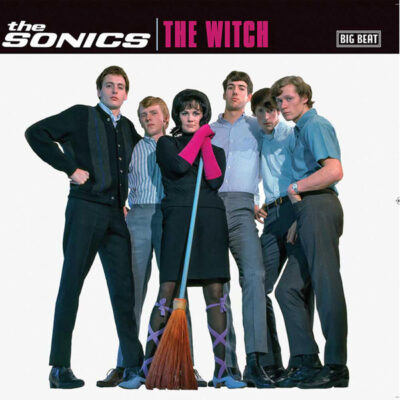
The Sonics’ drummer, Bob Bennett, had a very muscular style and one that I determined later would make Led Zeppelin’s John Bonham sound restrained.
But don’t take my word for it. In an interview with Nardwuar the Human Serviette on CITR-FM, discussing drum sounds, Kurt Cobain of Nirvana recalled that: “I have to admit… The Sonics recorded very, very cheaply on a two track you know, and they just used one microphone over the drums, and they got the most amazing drum sound I’ve ever heard. Still to this day, it’s still my favourite drum sound. It sounds like he’s hitting harder than anyone I’ve ever known.”
I saw Led Zeppelin twice including their first time in Vancouver where they were the warm-up act for Vanilla Fudge. It was Boxing Day 1968 and I had a front row seat. Terry David Mulligan was doing this lame MC announcer intro bit to the band (“They’ve only been together just three weeks, hah hah…”), and Robert Plant just strode out and reefed the mike away from him and told him to “Fuck off! You don’t know a fucking thing!” Then, Plant really pushed him away. Mulligan slunk off stage. Then, appropriately, the band rushed out and quickly broke into “Communication Breakdown.” They were the second British rock group I’d seen that had that Sonics “gear.” This might have had something to do with the dexedrine fuelled sound cult of the Yardbirds of which the guitarist Jimmy Page was a “graduate.”
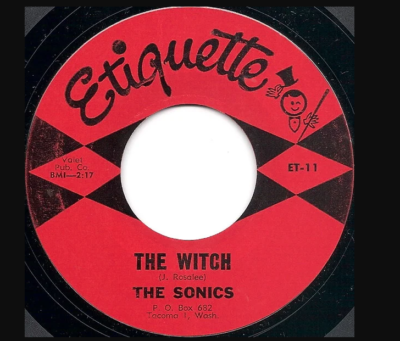
The other group was the Cream (with another Yardbirds grad, Eric Clapton) when they played (in some fringed leather jackets from Calgary Blackfoot artisans) before about 5000 at the Pacific Coliseum on June 2nd, 1968. It was a helluva concert where they played just four songs of about twenty minutes each with huge solos built into them. They too had Marshall amps. This video is very close to my experience. The solo breaks by Clapton are searing, smooth yet explosive thanks in no small measure to the Marshall amps. Clapton and Jack Bruce, the vocalist and bassist, really rock on the blues song, Crossroads.
For Led Zeppelin’s first time in Vancouver maybe there were 4000 people at the Agrodome. Tops. However, when Led Zep returned as a supergroup a little less than two years later, Vanilla Fudge was the warm up act. Led Zep’s performance that night wasn’t quite as mind-blowing as their first but don’t tell that to the crowd of at least 8000 (with a little help from their “friends”) that thought it was one of the best concerts ever as Led Zep took them on a walk up the “stairway to heaven.”
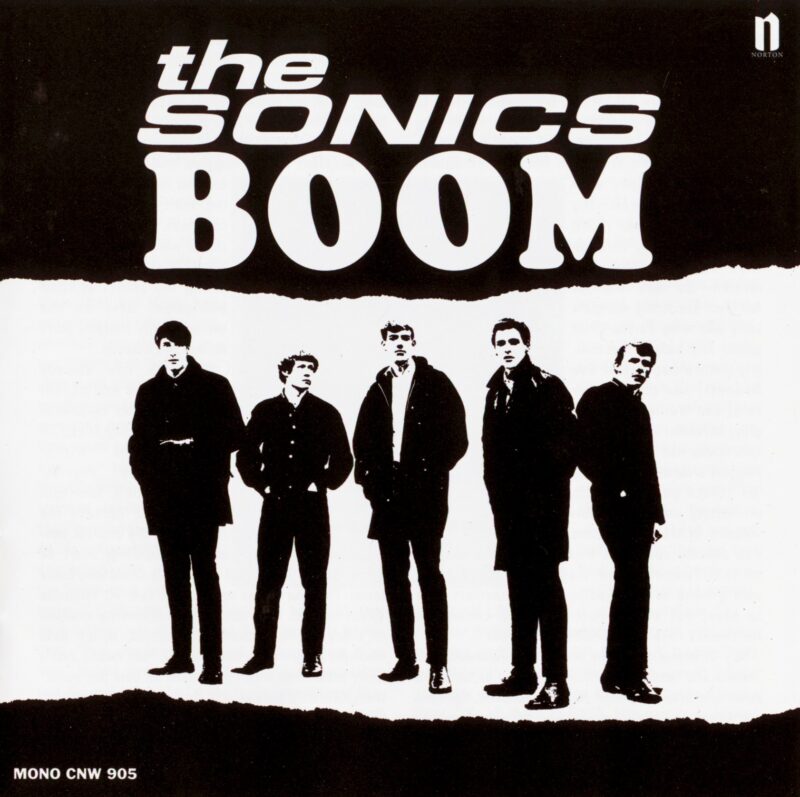
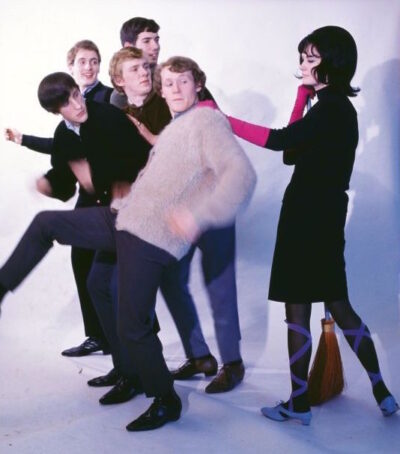
But The Sonics…nobody could scream like the Sonic’s vocalist Gerry Roslie. According to Sam Carlson of the great website, Pacific Northwest bands, the Sonics named themselves in middle school. “When the group was asked to play at their classmate’s birthday party, they named themselves The Sonics after the sonic booms from the nearby McChord US Air Force Base that had been annoying their entire neighborhood.” Noise begets noise- ahhh that Boeing “sound”![2]
Gerry Roslie was The Man and a big fan of Little Richard. To my young ears and eyes, Roslie’s singing style and urgent, visceral voice rendered Mick Jagger’s vocals as just another harmless, Britpop boy flopping about onstage in his appropriated R & B suit. “Get Off of My Cloud” alright. I know. I saw Jagger do that hit number that same year at the Agrodome in Vancouver for the teenyboppers of my local generation. I was one of 5,400 apparently. See this link to the lost — but obviously recovered — photos of the 1965 and 1966 concerts in Vancouver by the Rolling Stones in a March 2017 story by John Mackie in the Vancouver Sun. It shows how they looked.
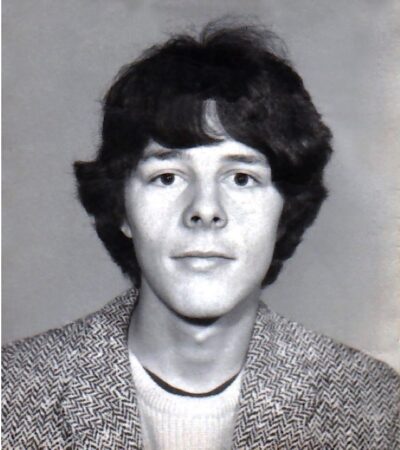
Incidentally, the warm up act for the Vancouver ’65 Stones gig was Lil Daddy & The Bachelors with some guy named Tommy Chong on guitar. Tommy Melton was Lil Daddy. Their hit song then was Chuck Berry’s “Too Much Monkey Business”. When RCA pressed the record some wiz in production changed the name to Daddie. There are also a few other wiz’s in poster production around Vancouver that like to spell it daddie too! That typo has been, unfortunately, replicated in Chapman’s book, Vancouver After Dark.
Their warm up act for the Rolling Stones was one of the last they did before morphing into Bobby Taylor and the Vancouvers without Lil Daddy, the former Calgary Stampeder football player, Tommy Melton. Melton died in 2018 with Bobby Taylor having died the year before in Hong Kong. Taylor is credited with discovering and promoting the Jackson Five.
The Sonics were way ahead of the Stones and that crowd but because they weren’t part of the overarching phenomena of Beatlemania, they had little marketing in the staid, little Seattle of ’64/’65. Buck Ormsby, bassist for The Wailers, likely said it best about the Sonics when he signed them to a record deal and why. “With their snarling put down lyrics about some icky girl who’ll “make you itch …’cause she’s the witch,” punctuated by Roslie’s patented blood-curdling screams, they had me. The Witch was not polite pop like the Beatles’ “Love Me Do,” the Beach Boy’s “I Get Around,” or other such commercially viable tunes in 1964.”
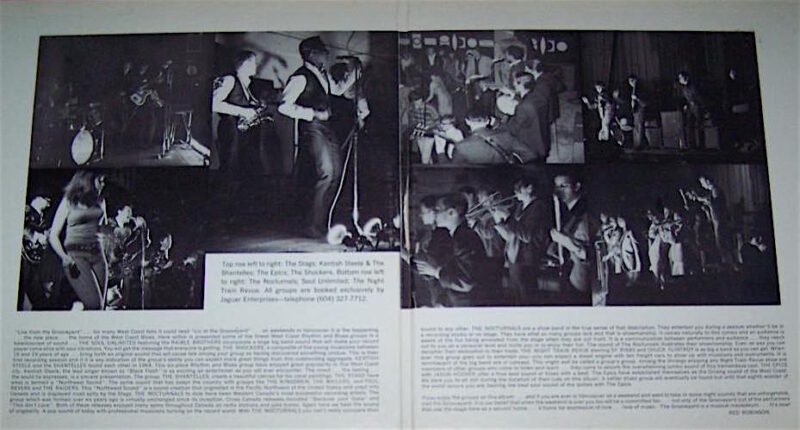
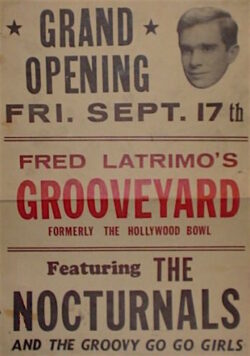
The Stones and many other Liverpudlian mop-heads were essentially nice, harmless boys and they all rode the coattails of the Fab Four. They were managed and financed by Brits that knew how to go abroad and exploit- it was in their colonial DNA. It might be hard to grasp now but the Pacific Northwest was quite isolated in many ways at that time. This also didn’t help the cause of fame or, at the very least, commercial success (i.e. just making a living). Also, college and Vietnam got in the way of the Sonics.[3]
The Sonics would return to the Grooveyard a few more times and I always tried to catch them. This meant hitch-hiking (usually in the rain) as I didn’t get my driver’s licence until I was 21. Around late ’66, they went somewhat psychedelic with long solo breaks in the middle of their songs replete with mandatory searing feedback. This is the sound that psychedelia had popularized. They never played in Vancouver proper to the best of my knowledge. The Sonics were so damned cool that it defies explanation.
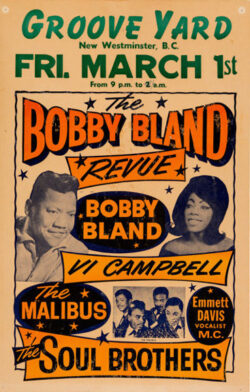
Jeffrey Jotz, a fan from New Jersey, sums them up best, “Energy-laden three-chord guitar hooks and the screams of vocalist Gerry Roslie capture the dance-crazed world of the early & middle 1960s before the hippies took over. All garage bands that are around today, and many punk bands of the 70s and 80s, were heavily influenced by this band. The legendary opening organ notes of “The Witch” can be interpreted as a call to worship for garage-o-philes around the world.” (Amazon customer reviews).
To provide an example of what they could do, take a look at The Sonics cover version of fellow Tacoma band, the Wailers’ hit, “Louie Louie.” The Sonics cover was icy, unapologetically ballsy and just plain, nutsy fun. The Wailers original version, on the other hand, while having a very catchy rhythm was bland. Such was the power of the Sonics that they were able to take that song, forge it in their blast furnace of sound, and pull out an unforgettable red hot branding iron of ringing, stinging steel that stuck not just to your skin but your mind. It was nasty but delicious stuff like a spicy, sizzling shish kabob coming right off the flaming sound grill.
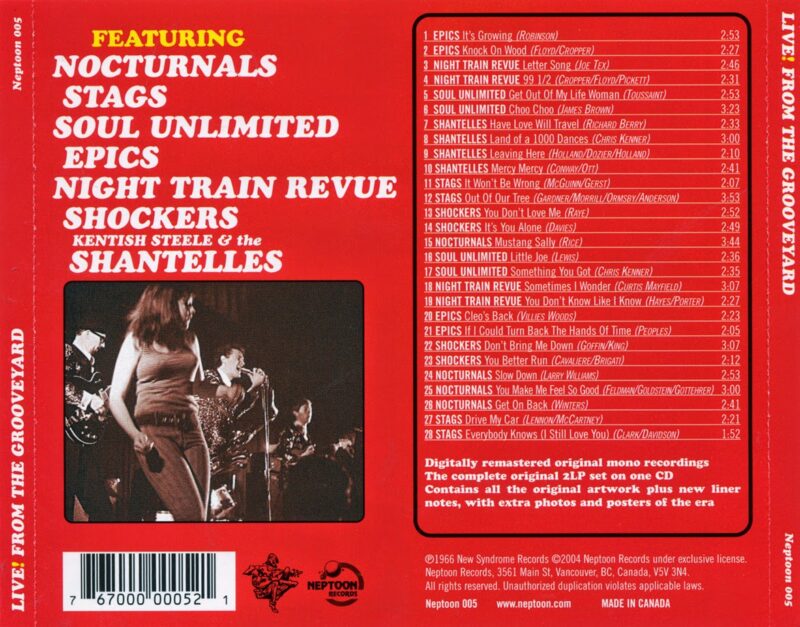
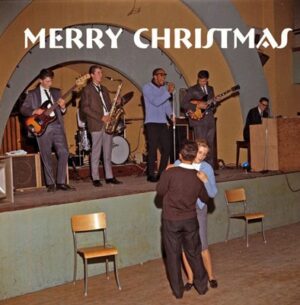
Although Tommy Chong was at the epicentre of R & B in Vancouver proper, The Grooveyard was a constant centre of R & B for the Lower Mainland. The “house band” at The Grooveyard, was the elegant Night Train Revue. Later, it came out that they were minor shareholders in the club along with the major shareholders, Robinson and Vogt. They were very good but my favourite group among the local Vancouver R & B groups playing at the Grooveyard was, Kentish Steele and the Shantelles. The key to these groups was that they both had Hammond B3’s, not these wimpy, nasal Yamaha alternatives that so many little rock groups used at that time. I mean, c’mon — how can you play “Whiter Shade of Pale” with one of those cheapies? For me, Kentish Steele & The Shantelles were the reason to go there on a regular basis. Later, as grad president of our high school, Princess Margaret in Newton, when we were deciding on what band we’d like to play at our graduation bash, there was no doubt that we wanted them. And so it was. Graduation night was memorable especially since many of my fellow grads had never heard them and they were completely blown away.
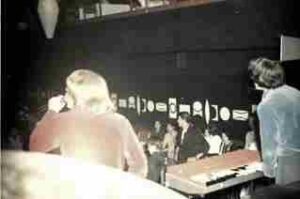
So, the Grooveyard was the catalyst for me as a place that I got out of myself, was transformed and connected with my tribe; where the pleasures of music and dance delighted and fascinated my sensorium. It all came alive on weekends and made the drudgery and humdrum of daily life bearable. It was where fantasies were born, dashed, rekindled, dashed again and before you knew it — you were right back in there bouncing with Sam & Dave’s songs sprinkling the dance floor.
The Grooveyard was the springboard for other dalliances with clubs and cabarets. I was not alone in discovering that music and dancing are the keys to living in a peak experience zone. But as R & B fizzled and Psychedelia sizzled, the Grooveyard and owner/promoter Les Vogt took a pass. He just wasn’t “into” the emerging drug scene. It closed in 1971 but not before he made a tidy sum of dough. He was becoming a bigger promoter fish with each passing season.
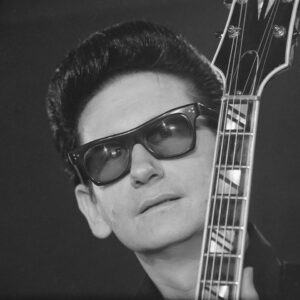
Later, working out of Nashville, Vogt would then go on to be a music impresario of some import doing some of the first big tribute shows, cashing in on Elvis Presley with Elvis! Elvis! Elvis! and then, later in an even bigger way, with Only The Lonely starring an old friend of his that was no stranger to the music scene in Vancouver in the sixties, Roy Orbison.[4]
I saw Orbison in concert in Vancouver as well. His records translated well onto the stage and were the standard fare for 14 & 15 year olds such as myself and my friends. Bobby Goldsboro was a back-up vocalist on stage as well as his recordings. Our basement parties at our friends usually ended the night with some of his crooning on the record player helped by some slow dancing and body heat. Our little crowd preferred him to Elvis. The older grease balls liked Elvis though. It also occurs to me now that my attraction to the Sonics was that with my maturation and rising testosterone levels, they were a striking contrast to the relative passivity and self-pitying of Orbison’s Only The Lonely oevre.
Beyond The Grooveyard
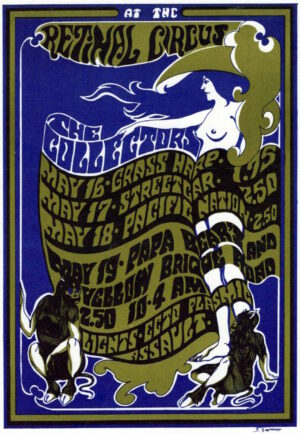
The Retinal Circus was the next place I loved to go to when I had the chance. For me, it was essentially a psychedelic Grooveyard. Curiously, R & B laid the foundation for the guitar wizardry of psychedelia and its prodigal son, hard rock. In their careers, Jimi Hendrix, John McLaughlin and Jeff Beck all cut their teeth with R & B groups. Even Loverboy’s lead guitarist, Paul Dean, got his start playing for Kentish Steele and the Shantelles. So the music scene in Vancouver in 1968 was definitely built on the back of R & B just as R & B was built on the spine of jazz. At the Retinal Circus I saw the Doors and they were just okay. (I saw them later in a bigger venue in Vancouver and they were rather ordinary…again). But after having seen, the Grateful Dead, the Daily Flash and Big Brother & The Holding Company (with someone named Janis Joplin making her first appearance on a big stage) and especially the Quicksilver Messenger Service earlier that summer at the Vancouver Trips Festival, I was likely a little jaded and not easy to impress. Just maybe. I saw Jefferson Airplane at the SFU cafeteria one night in the fall of ’66. That was before there was a SUB at SFU. Grace Slick’s voice was so strong and evocative.
The thing that stood out, so to speak, in the Doors’ Retinal Circus gig was Jim Morrison’s considerable cod piece in his black leather pants. And, given the height of the stage at the Retinal Circus, it meant that for his growing groupie entourage, it was conveniently located at eye level.
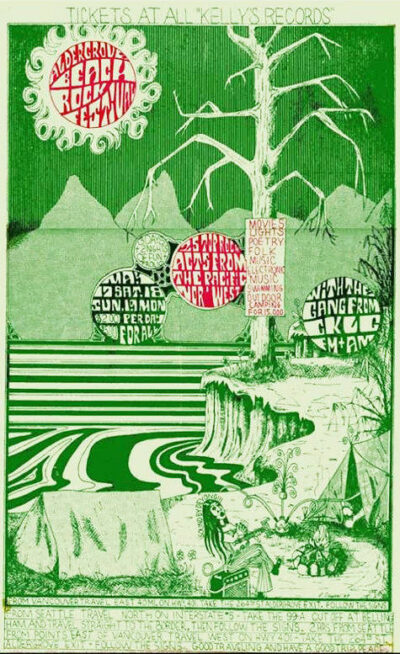
San Francisco bands notwithstanding, it was the local bands that regularly lit up the night at the Retinal Circus. One band that stood out was the Black Snake Blues Band (later just Black Snake). Their sound was simply amazing and drew comparisons later on to the Allman Brothers in their prime (but not until their 1971 Live At The Fillmore East LP mind you). Black Snake had multiple guitars that could play lead or rhythm with the result being that riffs and solos would happen simultaneously. This was not the tidy formula of pop music at the time. They would create music and weave sounds that would spiral in a tight, ecstatic rhythm and pattern. The style that Black Snake had developed was never more apparent than when they unleashed their version of “Who Do You Love?” at the Aldergrove Beach Rock Festival on the May long weekend of 1969. Eat yer heart out Quicksilver Messenger Service! Amen…Bo Diddley! They simply owned the universe after that song. The ovations came in waves with people singing back and pointing to them “You You You!” as Black Snake laughed somewhat embarrassed on stage. Even they couldn’t believe how good this song had come off. Unfortunately they never recorded much and so they’ve left a sparse recording legacy.
The Classic Joint was the next place to really ring my bell as a customer. It was primarily acoustic or jazz or both. It had the spatial intimacy that the other two places didn’t have and was a quieter, mellower venue.
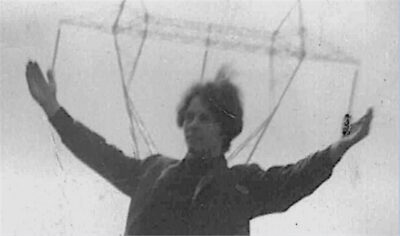
This really lovely vibe was enhanced by the likes of Smilin Jack Smith and Joe Mock. One night Mock, a graduate of Gonzaga U who majored in Philosophy, hooked up onstage with some newcomers to the local music scene, Rick Scott and Sherri Ulrich. They would improvise and tell funny stories and soon formed the beloved group, Pied Pumpkin. The Classic Joint was perpetually packed on the weekends and was, I firmly believe, one of the catalysts as to why Gastown became a really hip, new zone in Vancouver. That, and the fact that it was next to magnificent, old Chinatown spelled success for the Gastown revitalization scheme. Youth came in waves for the culture and the Classic Joint was its bedrock facing out onto Maple Square and the statue of Gassy Jack.
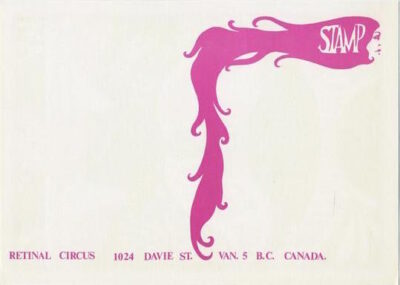
Other clubs then started to spring up in Gastown including the Savoy and that little gem of a club, the Spinning Wheel. This later venue right in the heart of Gastown was where the polished bluesman Tom Lavin and his Powder Blues held court. The equally talented Jim Byrnes also played regularly and usually acoustic solo or with another guitarist. It was a really nice club with a really good bar. In fact, it was the first club that I ever had a really good Scotch.
All aspiring music aficionados have to start somewhere. On my 13th birthday my mum bought me a little record player and two 45’s: Chattanooga Choo Choo by Floyd Cramer and The Lion Sleeps Tonight by The Tokens. Obviously, these were also songs that she’d heard on the radio and loved! It was, I suppose, better than her usual 33 RPM fare of Mantovani or Broadway musicals such as The Music Man, but not much better. Then along came the Beatles and folk music of the protest variety. Fast forward to my 16th birthday when I bought myself Bob Dylan’s Highway 61 Revisited in a bin at a new store in Whalley called K-Mart. Oh how quickly we evolve when we’re young. Then along came The Sonics — live and loud! They were IT for me, an astonishing and unbelievable catalyst. Thank God (or his or her rep) for The Grooveyard for giving them the chance to perform and to be heard outside of the Sea-Tac area.
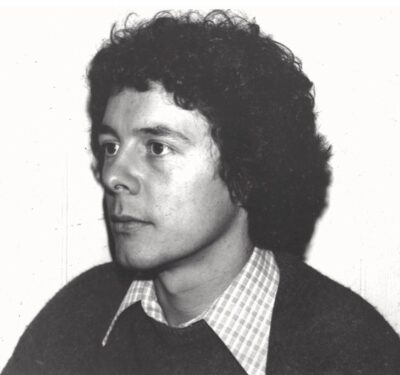
I was but one person that wandered unaware into the Grooveyard one Friday evening. It was my earliest music temple and I became a regular. I loved R & B but it was muted when compared to the sound of the Sonics. They really made me go “WOW!” Their music blasted into my bones, refracted into my marrow and melded into my adolescent blood. The resulting Sonics-infused hemoglobin coursed through me and was a transfusion curing my cultural anemia and opening me up to the soul and spirit of all music. The Sonics were a visceral and aural communion. Out of that cauldron of sound a music lover was forever born.
As it turned out, it wasn’t just for rock music but for all genres of music. However, the live music experience eclipsed them all. At this point in time there was an explosion of styles and a renaissance and integration of genres that made for a musical smorgasbord for neophyte listeners such as myself. (The excitement for music meant that in the late sixties I was spending $200/month on records at A & B. Vinyls then were about $5. It was a sound temple where I got my first real sound system: a Marantz amp, Dual turntable, TEAC reel-to-reel tape recorder and big three way Yamaha speakers.)
Here is a few of those key recordings that transformed me: Charlie Mingus, Blues and Roots, 1960 that I picked up at the that wonderful place, the Sound Gallery, on Robson after hearing the opening song, Wednesday Night Prayer Meeting; the wonderful music of Bert Jansch (Birthday Blues, 1969), John Renbourn (The Lady & The Unicorn, 1971), Sandy Denny (Sandy, 1972), Julian Bream (JS Bach Lute Suites #’s 1, 1965), Leo Brouwer (La Espira Eternal, 1971), Manitas de Plata (Manitas de Plata, 1973) and Alain Stivell (Renaissance de la Harpe Celtique, 1972). It was inevitable too in a kind of joyful way that I would be attracted then to jazz fusion.[5] I still have all of these important LPs.
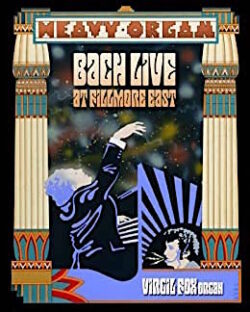
On the live music front, the organ virtuoso Virgil Fox played the Queen Elizabeth theatre in October of 1971 and ended the concert with Bach’s masterpiece, “Come Sweet Death.” Thanks to impresario David Y. H. Lui for this heavy organ show, Bach Lives! There had to be huge overhead to bring in Fox’s special organ for the performance.[6] It still stands out as one of my greatest musical experiences. Fox had rhinestones studded on edges of the soles of his shoes that sparkled in the footlights as he did his intricate foot pedal work. It is an understatement to say that Fox was not a conventional classic organist like E. Power Biggs. He was a showman and what a show, man! Bach was his forté and nobody then could play him like Fox.
There were many other special occasions where so many like-minded fans came a flocking to see who was playing in Vancouver. Joni Mitchell on her tour doing many of the songs from latest album Blue at the Queen E in March of 1973 was another high point for me. It also marked an apogee in her writing/performing career. On this song from that album she’s playing a dulcimer made by Rick Scott (when early on he lived on the Sunshine Coast). Scott may have got the plans and wood from Bill Lewis. She performed this song at the Queen E concert and told the story of her dulcimer maker.
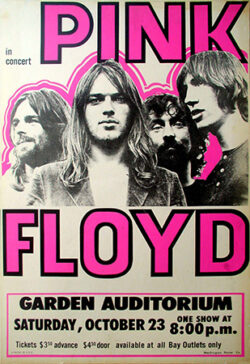
And who could forget the first Pink Floyd concert at the Gardens in October, 1970? One of the highlights of the concert was a distinctive piece of sound engineering- the sound of a person with boots walking along the ceiling from the back of the Gardens to the front of the stage and then opening a big, creaky door. So gothic. I believe it was from the song, “Careful With That Axe Eugene.” It was a fantastic moment loved by the audience. Welcome to what became known as progressive rock. This was a London marketing term to distinguish it from the skank of San Fran’s psychedelic rock.
It was during their stay in Vancouver that Pink Floyd’s lead guitarist, David Gilmour, would meet the famous and late lamented Vancouver luthier, Bill Lewis. Gilmour was impressed by Lewis and his guitars and would order a special 24 fret electric guitar from him before leaving town. This guitar would be immortalized with the release of their legendary album, Dark Side of the Moon. Gilmour was so anxious to get his hands on this Lewis guitar that as soon as Bill Lewis had finished it, his wife Carole hand-delivered it to Gilmour at the San Francisco International airport just before Pink Floyd was embarking on a tour.[7]
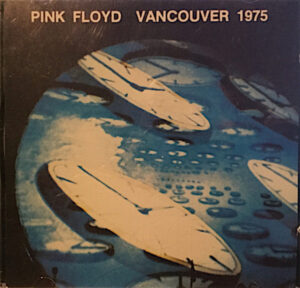
Dark Side of the Moon has been listed as one of the greatest albums of the last 40 years and it made a lot of money for everyone. So much so, that according to the 2006 book, And Now For Something Completely Digital, by Alan Parson and Mick O’Shea, the band found themselves in a “tax position.” To soften the tax blow, they decided to invest in the 1975 released film, Monty Python and The Holy Grail. They were not alone — Led Zepellin, Genesis and Elton John plunk down£20,000 each for production costs and, of course, a tax write-off. On behalf of western civilization, I would to thank Pink Floyd and the Monty Python Gang for introducing us to the Knights Who Say “Ni!” Likely the tallest trolls in history, they demanded shrubbery payment before one could pass. “It” is one of the funniest moments in the history of comedy. IT really is. (Bill Lewis deserves a nod as well because without his guitar… etc., etc.)
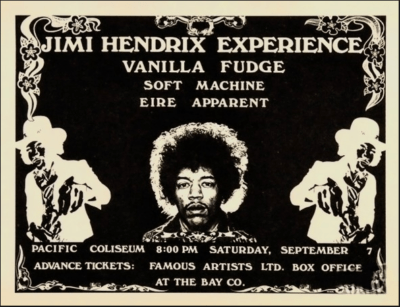
In the same progressive rock groove, Soft Machine’s performance two years earlier was excellent. They showed the power and plasticity of progressive rock especially the number “Thanks Old Horse For The Use of Your Body.” They were a terrific warm-up act for Jimi Hendrix’s only Vancouver gig, on September 7th, 1968 at the snare drum-shaped Pacific Coliseum. I’m afraid that Jimi was just okay. His “cold” didn’t help either.
All of the pieces that made the Grooveyard, (and other clubs at the time) really work as a cultural force in the Lower Mainland (as it has been “affectionately” referred to for ages) have largely disappeared. But, the “Truth” — as Andrew O’ Hagan recently said in an Edinburgh BookFest interview promoting his latest book, Mayflies — “is an imagined thing.” And the truth is, that despite the factual disappearances of the clubs I’ve touched on, the element of memory pulses on in my imagination. They have disappeared as I will disappear but I, like other social historians, will never forget.
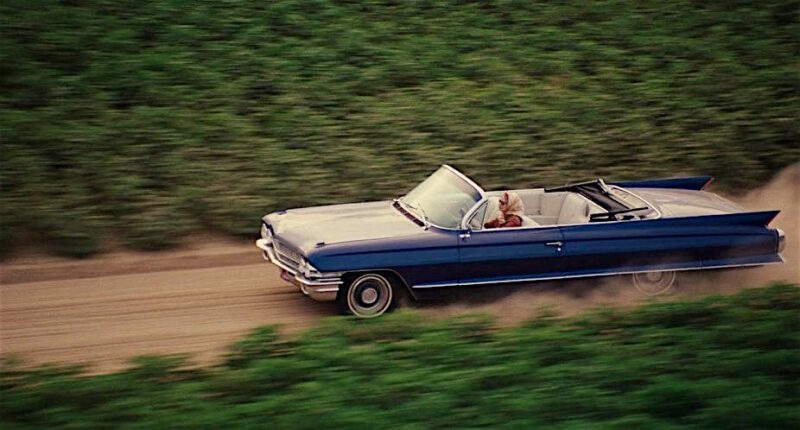
The Witch’s “big black car”
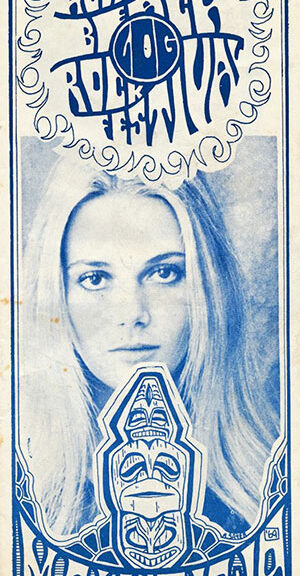
The hitch-hiker that I was in the past was used to surprises when getting picked up. With the Sonics, I stuck my thumb out at the Grooveyard and up pulled a “big black car,” a big-finned convertible, with the Witch at the wheel. The music was loud but clear. From the moment that we sped away, with her “big black hair” flowing, she saw and felt me looking at her with fascination. When she cast a glance back over at me, she smirked at my expression and tromped the gas pedal — “Yahhhh” she wailed joyously with gleaming eyes. I joined her with my “Yahhhh!” How could I not? Man, what a creature!
We were just whipping along the road as the sun was going down, burgundy and laté coloured clouds gathering, the power of the night rising. Every part of me tingled.
I didn’t know where this was going and I didn’t care. In this moment of choiceless elation, another thought crept into my mind as we careened down the highway at 100 miles an hour. Dead Man’s Curve lay ahead and it was well before Lovers’ Lane. I was in her hands and worry was somehow creeping in.
She was an older “woman” but attractive, offbeat and erotic. Her eyes were luminous and lively. I could see an unconscious teenage fantasy unfolding in my hazel eyes, intimacy seemingly just around the corner with this dark enchantress. Could I do this? Could I pay the price? I thought I could but really I wasn’t sure. At precisely the time I was having this thought, The Curve was upon us. The whole car began to shudder as she steered us through the curve. Or, should I say, she threw us into the curve? I grabbed my seat to hang on. This old rear wheel drive cruiser didn’t have seat belts. The dashboard chattered violently and the car howled as the tires and the road duked it out in a smoking, centrifugal arc — a roaring ecstasy of speed punctuated by a little whiplash sway as we came out of the perfect four wheel drift she’d thrown us into. We now sailed down the road, no foot on the gas, just coasting in our post Dead Man’s Curve momentum. I straightened up in my seat and looked over in admiration to the witch.
“This is as far as I go.” she said slowly in a drawl. Her statement jerked me out of this high. I stared blankly at her. By way of explanation she informed me, “You’ll have to get out and make the rest of the way by yourself.”
“Oh … yah … thanks.” I got out fumbling and was beside myself thinking, “Oh sure, and like this kind of thing happens all the time.” She nodded and smiled as I closed my door. Her eyes, her eyes, oh her eyes! I watched dejectedly as she drove off on a side road while I was still on the highway. To this day I don’t know how I made it home. I think I walked.
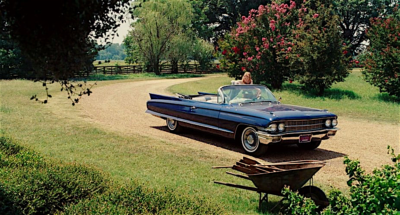
That ride, however so brief, was such a peak experience. It was the night that I started down the meandering path of individuality and its versions of Dead Man’s Curve. I’ll admit I was left with an itch. It is something with a life all its own. Curing that itch is a tricky thing and sometimes takes a lifetime. The cure sometimes becomes a blur and perspective is lost — a missed stop sign here, a case of lead-footitis there. I’d heard and seen something at the Grooveyard that had transformed me. My itch had no salve that I knew of other than just growing up.
I understand now the pull, the attraction of nightclubs and Dead Man’s Curve and why we really went there. We went there not just to have fun but to find and to challenge ourselves, and to go through it, get past it and overcome our fears. In short, to push the limits and discover who we really are — or could be — and have a shared experience. Sometimes we make it and sometimes we don’t but sipping from the Chalice of Thrills is instinctive and something almost everyone does. Maybe I should have gulped from that glass! In my case, it was a danger-as-an-aphrodisiac cocktail with foxy car sex in Lovers’ Lane a possible reward.
But that hard bend is now clearly in the rearview mirror of my Volvo and the witch is a phantasm on memory highway. But now here she was again, by herself, on the road! She didn’t have to stick out her thumb. Memory and reality merged as I stopped to give her a lift. It was the same corner where she’d dropped me off decades and decades ago.
She slipped into my passenger seat and I felt her really looking at me and taking me in as we slowly drove off. I didn’t know what to say so I said nothing, more than a little stunned. On the other hand, she acted nonplussed, as if this kind of thing happened every day. She was relaxed and smiling softly, just looking at me and down the road. She smelled of fresh air, the forest and another fragrance I just couldn’t put my finger on. Was it Eau de charcoal des Sonics from my baptism of fire at the Grooveyard? Must’ve been.
“I thought you’d never come.” she then says in mock exasperation. “What took you so long darling?”
“Oh, hard to say,” I say, exhaling a little and laughing, “just waiting for the right moment.”
*

Grahame Ware is a regular contributor to The Ormsby Review. He sold his Fender amp and Gibson SG guitar to finance his return to SFU as a mature student in 1975. He enjoys the intellectual and creative elbowroom afforded by the digital memoir, essay, and meta-review. He has also contributed three previous memoirs, My Private Chinatown, My Private Italy, and On the road with Sir Kenneth. He also is the author of many articles in international horticultural journals and a member of the SFU-based Canadian Association of Independent Scholars. Grahame now lives on Gabriola Island where he cultivates his garden and solitude — but he can’t wait for the new brewpub to be built at Silva Bay, where there will undoubtedly be an abundance of music and entertainment. Editor’s note: Grahame Ware has reviewed books by Aaron Chapman, John Moore, Ken Smedley, Kerri Sakamoto, Mike Lascelle, Roy Miki and Michael Barnholden, Jan DeGrass, Jon Steinman, Pirjo Raits, Keith McKellar, Dan Jason & Michele Genest, Lou McKee, and Monika Ullman for The Ormsby Review.
*
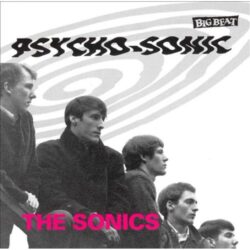
The Ormsby Review. More Books. More Reviews. More Often.
Publisher and Editor: Richard Mackie
The Ormsby Review is a journal service for in-depth coverage of B.C. books and authors. The Advisory Board consists of Jean Barman, Wade Davis, Robin Fisher, Cole Harris, Hugh Johnston, Patricia Roy, David Stouck, Maria Tippett, and Graeme Wynn. Scholarly Patron: SFU Graduate Liberal Studies. Honorary Patron: Yosef Wosk. Provincial Government Patron since September 2018: Creative BC
“Only connect.” – E.M. Forster
Endnotes:
[1] “Deep Purple earned a place in the Guinness book of world records in 1972 when a London concert peaked at 117 decibels (according to loudness lore, the volume rendered three concert goers unconscious).” How the Marshall Amp Changed Rock—and the Meaning of ‘Loud’, W. Weir, April 11, 2012, The Atlantic . In another paragraph, it says, “In his book, Your Brain on Music, neuroscientist Daniel Levitin suggests that very loud music saturates the auditory system, causing neurons to fire at maximum rates.” Here’s the beast that Deep Purple guitarist, Richie Blackmore, used to create his sound and my tinnitus! Recently, he was doing medieval music playing acoustically to very small audiences with his project, Blackmore’s Night. It’s much easier on the ears.
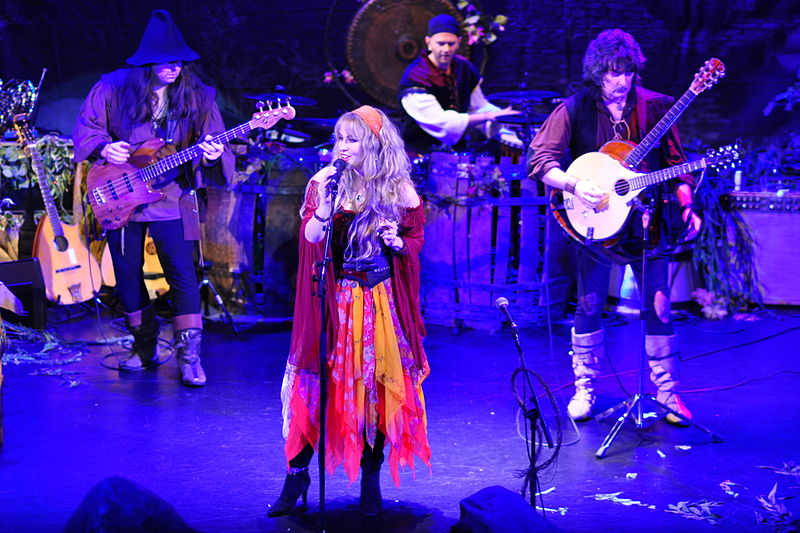
[2] What is it with Tacoma, Washington? It was the home of the greatest instrumental band of all time, The Ventures. Who didn’t play Wipeout or Walk, Don’t Run when you got your first guitar back in the early 60’s? Are the waves there big enough to surf? I ask only because they were responsible for starting the surf music craze. As the above Wikipedia link says, “John Fogarty during his introduction of the Ventures at their Hall of Fame induction, said that it “kicked open a whole movement in rock and roll… The sound of it became ‘surf music’ and the audacity of it empowered guitarists everywhere.” Stephen Stills told Ventures guitarist Don Wilson that he learned to play on Ventures records.” So, where would the Beach Boys be without The Ventures? Or Cliff Richard without his great back-up band, The Shadows?
[3] Sonics history: see here for some very detailed history as to why they never made it.
[4] Les Vogt has a very interesting story to tell and does it well on his website. See here for all kinds of specs about the early rock ‘ roll, R & B and country music scenes in Vancouver, from the horse’s mouth.
[5] In the latter area, I produced and hosted a short-lived jazz fusion show in 1977 on COOP Radio. I used a Jean Luc Ponty song off his 1977 Enigmatic Ocean LP with the amazing Alan Holdsworth on guitar as my theme. I regularly featured Airto, Flora Purim, and especially the late Chick Corea (part of the first great fusion group, Return To Forever), John McLaughlin (and his Mahavishnu Orchestra), Weather Report and so many others. The bluegrass/granola management of that era at CFRO 1978-FM (aka COOP radio) scorned fusion as did jazz “purists” like George Bowering. One night as Bowering was leaving the studio (as a guest on another show), he mocked my jazz fusion show as I was about to go on-air. He extolled the virtues of Betty Carter emphasizing, “Now that’s “real” jazz.” I could see that he just didn’t get it and he likely thought the same of me. Carter’s biggest commercial success was a duo with Ray Charles entitled, “Baby Its Cold Outside”. Carter did some great Sarah Vaughan like stuff and was quite the vocal original. Jazz fusion was not the death-knell of jazz (or rock) but simply what jazz had always done i.e. re-invent itself using the sounds and sound-making materials that were around and available. Chick Corea’s impact on jazz has been significant. Long live Señor Mouse!
[6] Virgil Fox used a Rodgers Touring organ that was affectionately referred to as Black Beauty. It was built in 1966 and kicked-off a series of “heavy organ” shows complete with a light show by Pablo’s Lights. This was what I got to see in October shortly after a similar concert 10 days earlier was recorded at the Fillmore East by Decca Records.
[7] As a philanthropist, David Gilmour has few equals in the British music business. In June of 2019 he auctioned off 126 of his guitars for charity at Christie’s in New York. According to Wikipedia, these included his “Black Strat, his #0001, early 1954 Stratocasters, and his 1955 Les Paul. The Black Strat sold for $3,975,000, making it the most expensive guitar ever sold at auction. The auction raised $21,490,750 in total with the proceeds going to the environmentalist charity, ClientEarth. Not too bad for a guy whose biggest hit was “Money!” Skewering capitalism can be so subversively profitable at times, can’t it? It is worth noting however, that Gilmour did not sell his 1970 Vancouver-made, 24 fret Bill Lewis with its construction of predominantly BC wood. For Gilmour, that axe just sounds too good to even think about parting with it.
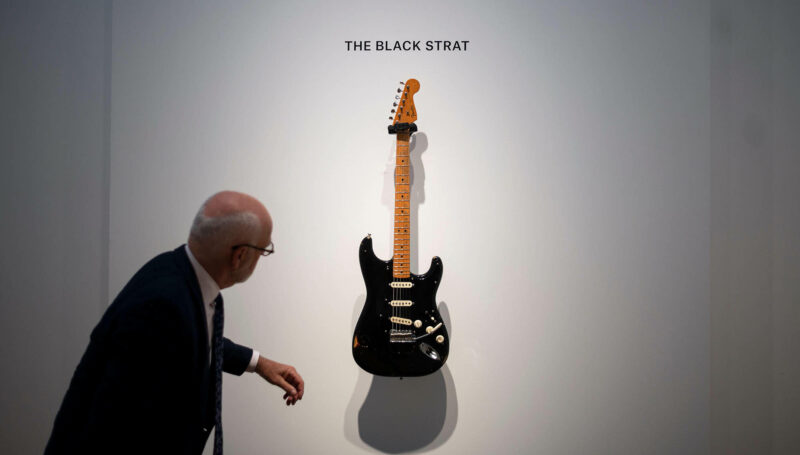
2 comments on “1066 The Sonics at the Grooveyard”